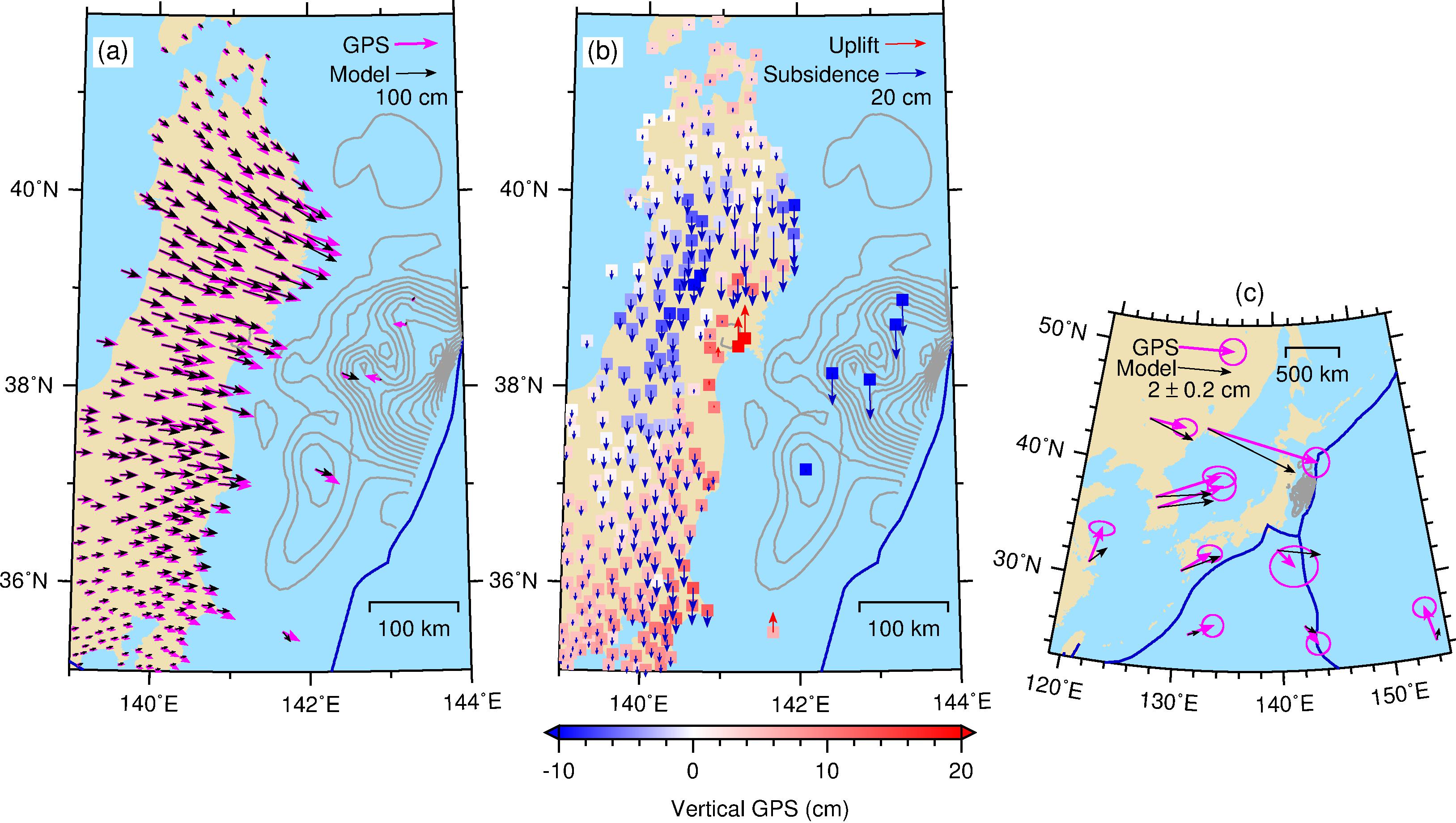

Understanding of postseismic deformation following great subduction zone earthquakes is complicated by the combined effects of viscoelastic relaxation of earthquake-induced stresses in the upper
mantle and time-dependent afterslip on the megathrust. We integrate geodetic observations and constraints on afterslip from small repeating earthquakes on the megathrust to better distinguish contributions from these two postseismic processes. We have developed a three-dimensional, spherical viscoelastic finite element model to study the postseismic deformation of the 2011 Mw9.0 Tohoku earthquake that has been recorded at unprecedented high resolution in space and time.

We model stress-driven afterslip in a 2 km thick weak shear zone away from historic rupture zones on the megathrust. We model both the viscoelastic relaxation of the upper mantle and shear zone deformation with a transient Burgers body rheology. The transient Kelvin viscosity is assumed to be one order of magnitude lower than that of the Maxwell viscosity. Viscoelastic relaxation of the mantle wedge alone causes postseismic uplift and seaward motion in the upper plate, opposite to the pattern from relaxation of just the oceanic upper mantle. Afterslip on the fault produces uplift updip of the afterslip zone and subsidence over its downdip edge and mostly seaward motion above the afterslip zone.

The best fit Maxwell viscosity of the shear zone at depths ≤50km is 1017 Pa s, constrained by afterslip estimates from repeating earthquakes. The optimal viscosities of the deep weak shear zone, continental mantle wedge, and oceanic upper mantle are determined to be 5 × 10^17 Pa s, 3 × 10^19 Pa s, and 5 × 10^19 Pa s, respectively. The stress-driven afterslip in the shear zone is up to ~3.5min the first 2 years after the earthquake, equivalent to an Mw8.4. Our model reproduces the first-order pattern of the GPS observations in both horizontal and vertical directions. Seafloor geodetic observations of subsidence and landward motions near the high-slip zone of the earthquake provide evidence for a low-viscosity asthenosphere below the oceanic lithosphere.

This work was published on JGR.
Hu, Y., R. Bürgmann, N. Uchida, P. Banerjee, & J.T. Freymueller (2016), Stress-driven relaxation of heterogeneous upper mantle and time-dependent afterslip following the 2011 Tohoku earthquake, J. Geophys. Res. Solid Earth, 121, doi:10.1002/2015JB012508. Link
Copyright © Geodynamics Research Center,USTC/DSEL. All Rights Reserved.